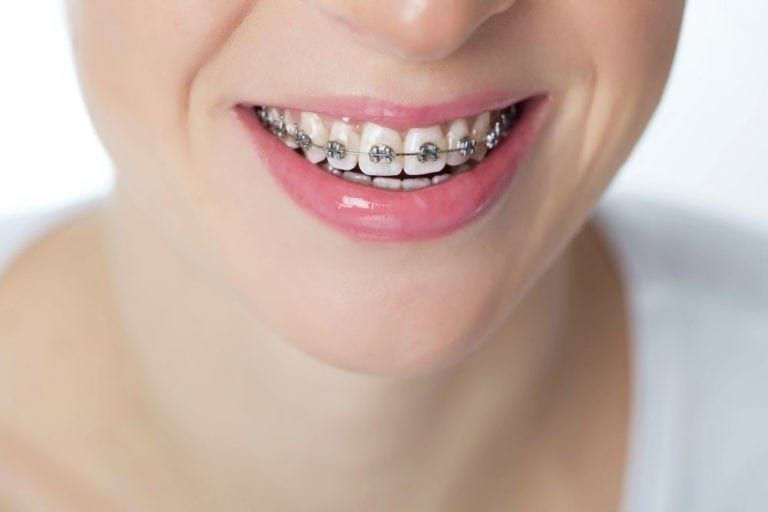Braces vs. Aligners: What Your Orthodontist Wants You to Know
- dclinicdubai
- Jun 16
- 4 min read
When it comes to straightening teeth and improving your smile, you have more options today than ever before. The two most common solutions—braces and clear aligners—each have their own strengths, and choosing between them can be challenging. For those considering treatment, especially with the growing number of expert orthodontists in Dubai, understanding the differences is key to making the right decision for your lifestyle, dental needs, and budget.

The Basics of Braces:
Braces are the traditional method of orthodontic treatment, consisting of metal brackets bonded to each tooth and connected by a wire. Over time, the orthodontist tightens the wire to gradually move teeth into the correct position. While metal braces are the most common, ceramic and lingual braces offer more discreet alternatives. Braces are particularly effective for complex dental cases that require significant tooth and jaw adjustments.
What Are Clear Aligners:
Clear aligners, such as Invisalign, are removable trays made from medical-grade plastic that fit snugly over your teeth. Each set of aligners is custom-made to apply controlled pressure and gradually shift teeth. Aligners are popular for their aesthetic appeal, as they are virtually invisible, making them a preferred option for teens and adults who want a discreet treatment solution.
Treatment Duration and Effectiveness:
Both braces and aligners are effective, but treatment time can vary depending on the severity of your condition. Braces are typically worn for 18 to 36 months, while aligners may complete treatment in 12 to 24 months. However, aligners require strict discipline; they must be worn for 20 to 22 hours a day. For complex orthodontic issues, braces may be more efficient due to their continuous force and ability to correct more significant misalignments.
Comfort and Maintenance:
Braces can cause initial discomfort, especially after adjustments, and they may irritate the cheeks and gums. Aligners, on the other hand, are smooth and generally more comfortable, though some tightness is expected when switching to a new tray. Maintenance also differs—braces require careful cleaning around brackets and wires, while aligners must be removed during meals and cleaned regularly to prevent staining or bacterial buildup.
Aesthetic Considerations:
Aesthetics play a major role in treatment choice. Braces, particularly metal ones, are more noticeable, although ceramic and lingual versions can minimize their visibility. Aligners are clear and discreet, often going unnoticed during social or professional interactions. Many adults opt for aligners to maintain a natural appearance throughout treatment, making them a popular choice among working professionals and older teens.
Dietary and Lifestyle Impacts:
Braces come with dietary restrictions; patients must avoid sticky, hard, or chewy foods that can damage the brackets and wires. Aligners, being removable, allow you to eat whatever you like—but only when the trays are out. This means more flexibility, but also more responsibility to brush and floss before reinserting them. Your orthodontist will help you choose a solution that suits your daily habits and lifestyle.
Cost Comparison:
Cost is a significant factor for most patients. Braces are generally more affordable than aligners, although the final price depends on the duration and complexity of treatment. In Dubai, the cost difference between braces and aligners can vary widely, but both are often covered partially by dental insurance. Many orthodontists in Dubai offer flexible payment plans to make either option more accessible to patients.
Follow-Up and Appointments:
Braces require regular visits—usually every 4 to 8 weeks—for adjustments and monitoring. Aligners often involve fewer in-person appointments, with patients receiving multiple sets at once and occasionally using virtual check-ins. For people with busy schedules or those who travel frequently, aligners can be a more convenient option. However, both methods need consistent follow-up to ensure proper progress and final results.
Post-Treatment and Retention:
Once treatment is completed, both braces and aligners require the use of a retainer to maintain results. Retainers prevent teeth from shifting back to their original position. In many cases, patients are required to wear a retainer at night for several years—or even indefinitely. Your orthodontist will guide you through the retention phase to ensure your smile stays aligned long after treatment ends.
How to Choose the Right Option:
The choice between braces and aligners ultimately depends on your individual needs, preferences, and the complexity of your orthodontic issues. If your case is mild to moderate and aesthetics are a priority, aligners may be ideal. For more severe alignment or bite problems, braces might offer a more predictable outcome. Consulting with experienced orthodontists in Dubai can help you weigh the pros and cons of each option and choose the most effective plan tailored to you.
Final Thoughts:
Braces and aligners are both excellent tools for achieving a healthy, confident smile, but they serve different purposes depending on your goals and dental health. Understanding their differences in comfort, visibility, maintenance, and cost can help you make an informed decision. Regardless of which path you choose, working closely with skilled orthodontists will ensure a smooth journey and lasting results. In a city like Dubai, where top-tier care and modern techniques are widely available, you're in good hands no matter which option you select.


Comments